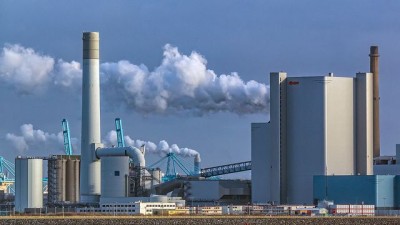How Three Brand-New Power Plants in the Netherlands Are at Risk Already of Becoming Stranded Assets
Posted by Jeroen van Agt in Unsustainable No Comments» Coal-fired power generation is vulnerable everywhere to increasingly ambitious initiatives to cut carbon emissions.
Coal-fired power generation is vulnerable everywhere to increasingly ambitious initiatives to cut carbon emissions.
This is acutely evident today in the Netherlands, where a recent court ruling and a parliamentary motion supporting tougher actions to avert climate change represent a growing trend.
This report assesses the impact of national pressures and beyond on the value of three new coal-fired power plants put into service in 2015 by the German energy companies RWE and Uniper, and the French energy company Engie.
More broadly, we note the implications from these examples for the business case for new-build coal power in Europe and further afield.
IEEFA’s Main Findings
- New regulatory pressures on coal in the Netherlands are creating headwinds for coal-fired power and increasing the penetration of competing renewables.
- RWE, Uniper and Engie have already taken underpublicized impairments on the new power plants collectively worth billions of euros, underlining the weak investment case for coal new- build in Europe.
- The value on the utility balance sheets of these new coal-power plants has dropped to about €1 billion or less each, compared with original capital expenditure of about €1.9 million per megawatt, or a total of €3 billion in the case of RWE’s Eemshaven power plant.
- Using a discounted cash flow (DCF) model, and applying very generous assumptions to coal power, we see a net present value (NPV) in the range of €400 million, for a comparative 1,100MW power plant.
- The discrepancy between our DCF valuation and the assessed book values of these three coal plants suggests that RWE, Uniper and Engie will have to take another, thorough look at their valuations.
- Given European political and power market trends, we see even lower future valuations for the three plants examined

Brand New Coal Plant Uniper Maasvlakte Netherlands
IEEFA’s Conclusions and Recommendations
These power plants are uneconomic in terms of meeting their original valuation and investment return targets, and their owners may have to make additional impairments. Their example rules out any new-build coal power in western Europe, while suggesting difficulties ahead for existing coal-fired generation.
Our analysis shows that these three new power plants are uneconomic under a wide range of plausible policy or market scenarios. It suggests that the investment logic that put them online in 2015 would not hold today, without government subsidies in the guise of capacity-market supports. We see gas-fired power as a more flexible and less carbon-emitting backup option than coal; renewables as more competitive, and other resources as more sensible, including more cross-border interconnection, more demand response and more electricity storage.
These three power plants offer an instructive example against investing in coal-fired plants in neighbouring countries.
Mandated, early retirement of these new plants may be the most cost-effective way to meet climate targets in the Netherlands.
Our analysis finds few if any scenarios under which these power plants can return value to investors, after accounting for the fact that the additional risk they bring needs additional remuneration.
Their early retirement may be cost-effective, in the context of tougher climate policies, and the level of asset impairments already undertaken. However, the utility-owners of the plants will resist closing them without compensation, given that they are still generating positive cash flows, notwithstanding their loss in value. We also note that plans for biomass co-firing mean that these coal plants are wrapped up in renewable energy targets in the Netherlands. And there are risks of cross-border carbon leakage from closing these power plants which are beyond the scope of this paper.
These three plants offer an abject lesson on investment in new coal-fired power.
The Netherlands case shows how policy and markets no longer support new coal-fired power plants. The Dutch plants were built on the expectation of robust power demand growth, which has not materialized. They are also rooted in a failure to anticipate massive capacity growth in near-zero marginal costs of wind and solar generation in neighbouring Germany; and the rising focus on carbon-emissions targets globally and growing government mandates to exit coal.
The mistaken energy orthodoxy that prevailed when these Dutch power plants were built still prevails in other developed countries. At present, for instance, OECD member countries with large pipelines of new coal-fired power plants planned or under active construction include: Turkey (74GW), Japan (22GW), South Korea (20GW) and Poland (9GW). We see stranded-asset risk in such new-build coal due to climate change policies and market trends, and especially to the rise of renewables and widening investment in energy efficiency, both of which have had such a devastating impact on wholesale power prices in the Netherlands.
The Dutch mistake tells utilities and investors to think twice about investing new coal-fired power plants. And it tells investors not to rely on the orthodox energy outlook of utilities.
By Gerard Wynn, Energy Finance Consultant
Full Report
The full report can be downloaded here:
The Dutch Coal Mistake: How Three Brand-New Power Plants in the Netherlands Are at Risk Already of Becoming Stranded Assets




